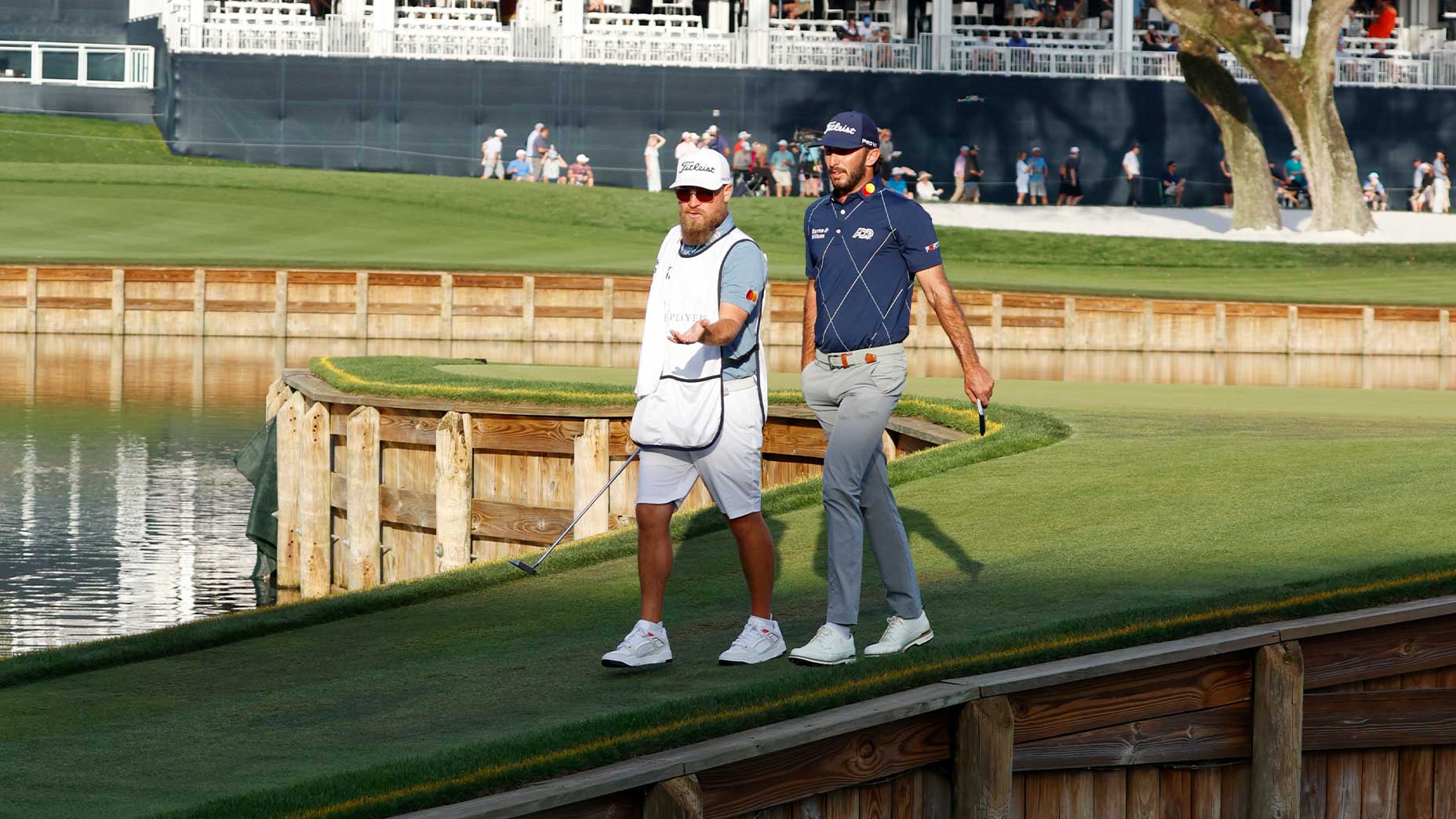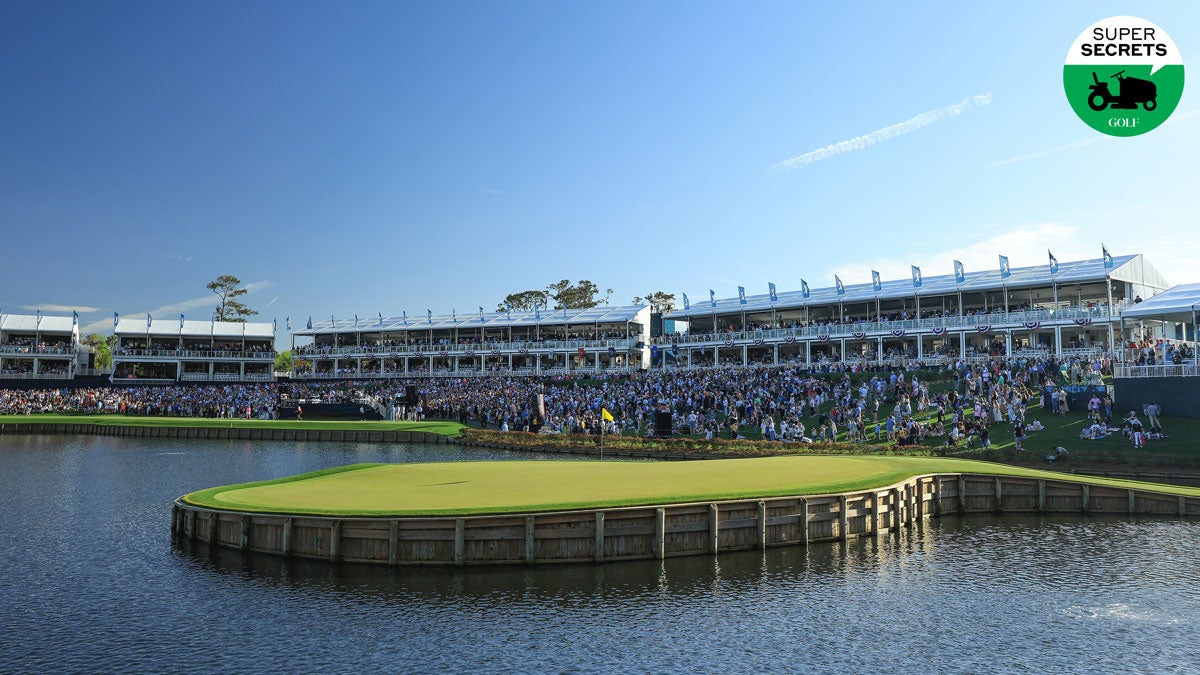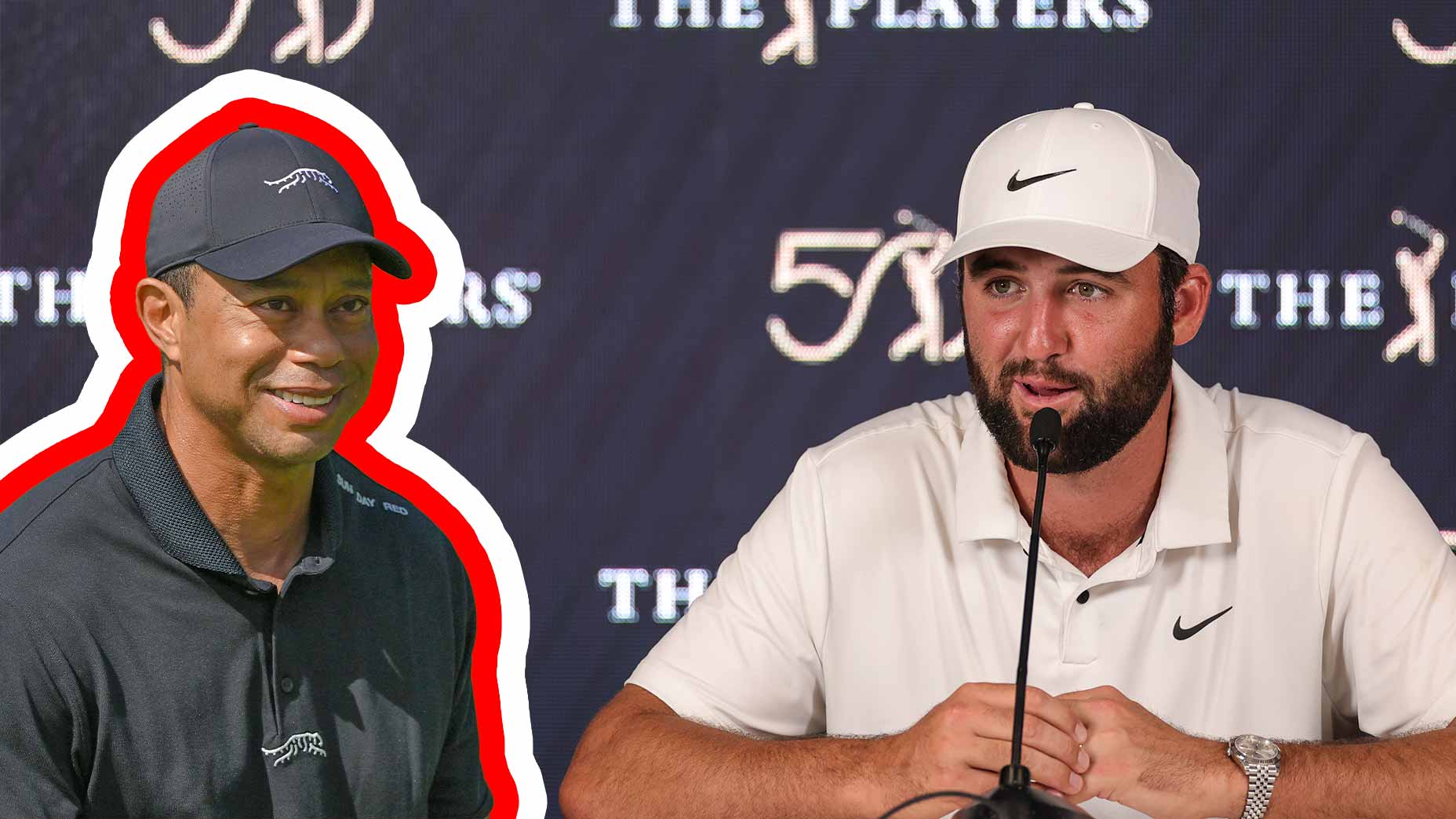This subtle island green change has fans frustrated (and players relieved)
- Share on Facebook
- Share on Twitter
- Share by Email

Max Homa walks off the 17th green at TPC Sawgrass.
Getty Images
PONTE VEDRA BEACH, Fla. — There is a strange sensation that happens when one steps into the colossus surrounding of the famed island green 17th at the Players Championship. The music stops. The energy shifts. And for the only time all year in professional golf, the fans smell blood.
In near-all other moments in near-all other golf tournaments, there is a genuine sense of goodwill among the golf faithful. They want to see great shots, executed at a high level, from the best players in the world. But not at the 17th. It is here that architect Pete Dye’s vision (or his wife, Alice’s) comes to life, and that fans’ worst instincts begin to take over.
“C’mon Matsu-YAAAM-a, dunk one in the drink!” one phonetically challenged fan pleaded from off the side of 17 on Friday morning while the former Masters champ surveyed his shot below.
“I’m seeing too many birdies,” whined another.
The problem, it seemed, was opposite to the one faced by many PGA Tour events this year, in which the most well-known players have struggled to perform, leading to a string of first-time and little-known winners. Here at the 17th, the best players in the world were performing too well, striping 140-yard wedges with a casual and authoritarian efficiency. After a sucker pin yielded an early-week ace, a rarity, for Ryan Fox on Thursday, Friday’s way-back pin placement presented all manner of makeable 2s … and perhaps more presciently not nearly as many deposits into the lake.
The cause of their frustration? Well, it could be spotted rimming around the 17th green in luscious, tee-high tufts that measured a small but notable distance longer than the putting surface. It was the collar of the green, and by the time Friday afternoon rolled around on the East Coast, it’d earned another name: The Bumper. All day long, while the sloping island green on No. 17 was inundated with golf balls, The Bumper served as a protective wall for golf’s best, holding tee shots with all manner of bad intentions safely on dry land. Sure, the thin wraparound of green grass required awkward chip shots with even more awkward stances, but it did not require golf’s best players to see their ball drop into the pond around the green, and that was upsetting for the fans.
For those watching from home, the sheer lack of carnage was a sign of a nagging issue in modern golf, where courses are catered to encourage low scoring and challenges are softened to keep from drawing the ire of the playing class. Shouldn’t the Players, annually one of golf’s toughest events, demand its players execute a sincerely good golf shot to remain on the island green? And isn’t a wedge shot that spins hard and fast enough to roll off a massive island green deserving of rolling into the water? In this way, The Bumper was a physical manifestation of a more essential issue: pro golf’s desire to see its players happy, and golf fans’ desire to see the sport’s players challenged. The PGA Tour’s flagship event, it seemed, had made its choice.
For those watching from up close, though, the island green’s protection was an issue of a more mundane variety: It was boring — and these people hadn’t entered the colossus to be bored. Through the better part of two rounds, the 17th had yielded just nine water balls and only 12 double-bogeys or worse, and for those responsible for watching the action, the drama was much more entertaining when those numbers were safely doubled (if not tripled).
One group in attendance at TPC Sawgrass on Friday did not share the fans’ enthusiasm, though, and that was the players. They seemed to enjoy the collar of the green saving their balls from the water very much, thanks for asking, particularly when factoring for how the absence of such a protective measure could affect their efforts at making the cut and earning a piece of this weekend’s $25 million purse. Asked for a good reason why The Bumper should exist, JT Poston offered a couple.
Fair or unfair? In Sawgrass 17th-hole setup, difference can be inchesBy: Josh Sens
“I feel like it’s always kind of been that way,” he said. “If there wasn’t any rough there, as soft as the greens are and as fast as they have them, it would be backed up pretty good there, I feel like. A lot of golf balls would end up in the water, especially yesterday. I mean, even, you know, you could make the argument you got to control your spin and I agree and I think guys try to do a pretty good job of that, but they’re just so soft, it’s kind of hard to keep it from coming backwards once it goes.”
Those arguments, of course, could be used in favor of removing the collar. A lot of balls in the water would be good for entertainment, and demanding the pros control their spin enough to land a shot on the green would be good for the quality of the field, too. But in a tournament that is annually one of golf’s slowest (Friday’s second round was not likely to get completed on Friday despite two days of brilliant weather and extended sunlight from daylight savings), it was fair to wonder if slowing down the competition any further was in service of entertainment or in conflict with it.
The final answer on The Bumper would not be found on Friday afternoon at the Players. Like most everything else during the first five days at the PGA Tour’s flagship event, conversations around it remained highly theoretical.
And theoretical isn’t necessarily bad. As the Tour wrangles with the changing scope of a $3 billion investment from the SSG and converses about untold billions with the Saudi PIF, the biggest questions facing golf are about its ability to generate interest and, by extension, return on investment. Nearly everyone agrees that improving the sport’s entertainment product for the fans is the best way to reach those ends, and watching the best golfers in the world struggle to contain the type of unmitigated rage typically reserved for your weekend round in Myrtle Beach would unquestionably be good entertainment.
As the biggest entertainment source at the PGA Tour’s biggest event, the island green has long been a metaphor for the way the Tour conducts its business. Once upon a time it was a reflection of the Tour’s cavalier desire to build courses for the pro game. More recently it was an analogy for the Tour’s cartoonified, score-at-all-costs style of golf. Whether The Bumper lives or dies is still to be determined, and strangely that’s a metaphor, too.
There is life at the island green. This week, it’s found in the water.
Latest In News

James Colgan
Golf.com Editor
James Colgan is a news and features editor at GOLF, writing stories for the website and magazine. He manages the Hot Mic, GOLF’s media vertical, and utilizes his on-camera experience across the brand’s platforms. Prior to joining GOLF, James graduated from Syracuse University, during which time he was a caddie scholarship recipient (and astute looper) on Long Island, where he is from. He can be reached at james.colgan@golf.com.










